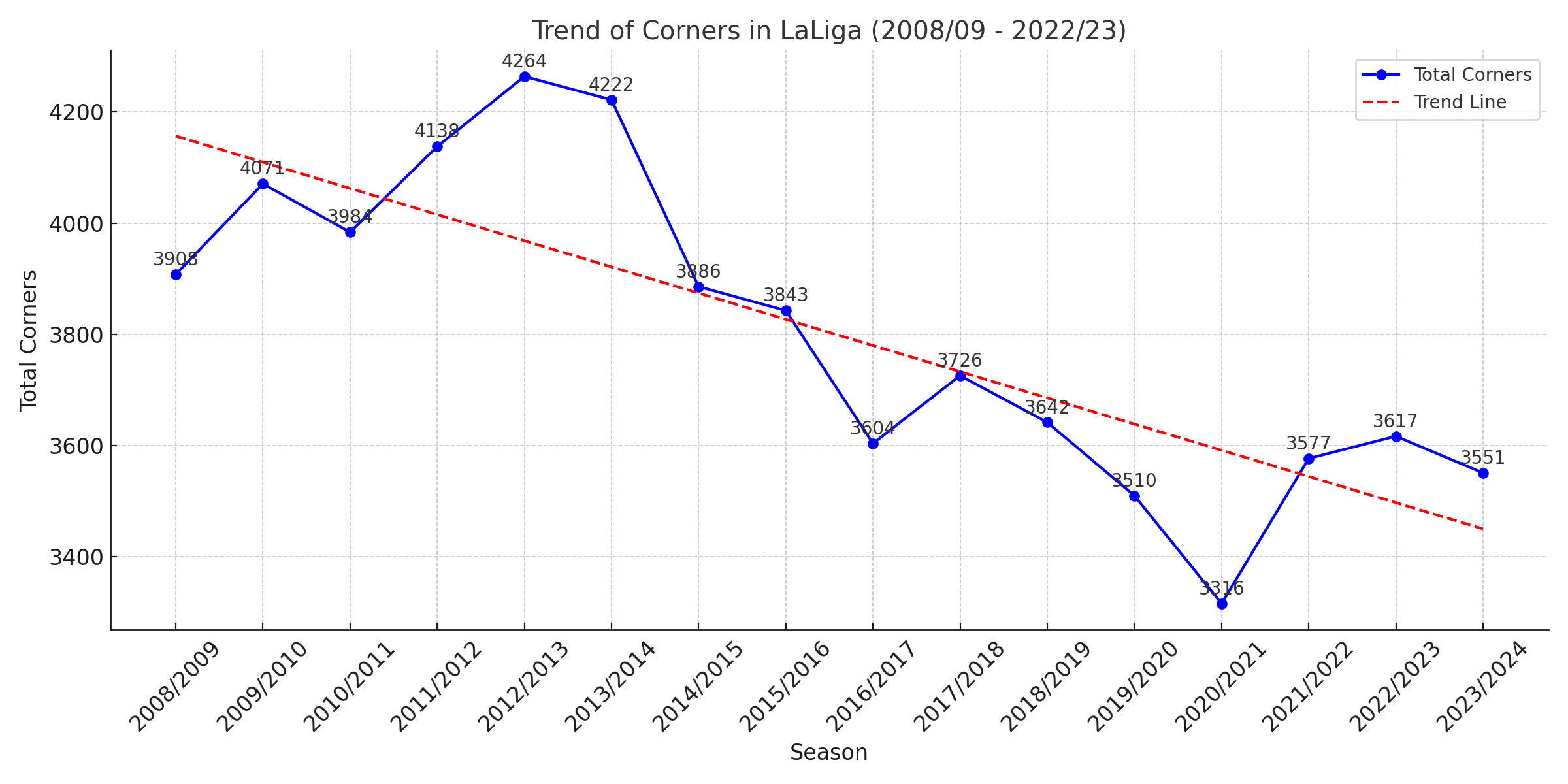
01 Ago Debunking the Set-Piece Myth: An Empirical Analysis in LaLiga
Abstract
In football, a common belief suggests that lower-tier teams use set pieces as a primary tactic to score against superior teams. This study analyzes data from the last 15 seasons of LALIGA EA Sports to explore the validity of this hypothesis. Through a statistical analysis of set-piece and corner goal percentages, it is shown that there are no significant differences between Top 5 and Bottom 5 teams in the use of these plays. The results challenge the traditional narrative and suggest that the effectiveness of set pieces is not exclusive to theoretically inferior teams.
Introduction
Set pieces, including corners and free kicks, have long been considered crucial strategic tools for lower-tier teams in football. The theory posits that these teams, limited in technical or tactical skills, rely heavily on these plays to counteract the superiority of more dominant teams. This study examines this hypothesis using data from LALIGA, exploring whether there is a significant difference in the use and effectiveness of set pieces between high and low-performing teams.
Methodology
Data from the last 15 seasons of LALIGA EA Sports were collected. The following metrics were analyzed for all teams and then compared between Top 5 and Bottom 5 groups:
- Total corners.
- Percentage of set-piece goals over total goals.
- Percentage of corner goals over total goals.
- Percentage of corner goals over set-piece goals.
Data were aggregated at the team/season level to obtain group averages. T-tests were conducted to evaluate the statistical significance of the differences between the groups.
Results
In the overall analysis, the data revealed some key trends:
- Total Corners:
- Contrary to initial impressions, there has been a slight decline in the total number of corners over the seasons for both Top 5 and Bottom 5 teams. This suggests a potential shift in offensive strategies or a reduction in opportunities leading to corners.
- % of Set-Piece Goals:
- Bottom 5 teams slightly outperform Top 5 teams in the percentage of set-piece goals over total goals. However, these differences are not statistically significant, indicating that set-piece reliance is not disproportionately higher among lower-tier teams.
- % of Corner Goals Over Total Goals:
- The percentage of corner goals over total goals remains similar for both groups, with Top 5 teams showing a slight advantage in some seasons. This suggests consistent efficiency in converting corner opportunities across different tiers.
- % of Corner Goals Over Set-Piece Goals:
- Again, Top 5 teams show a marginally higher percentage of corner goals within set-piece goals compared to Bottom 5 teams, but these differences are not statistically significant.
Figure 1: Evolution of average corners per season for Top 5 and Bottom 5.

Figure 2: Evolution of the percentage of set-piece goals over total goals.

Figure 3: Evolution of the percentage of corner goals over total goals.

Figure 4: Evolution of the percentage of corner goals over set-piece goals.

These findings suggest that while Top 5 teams tend to dominate in the number of corners, this does not translate into a significantly greater reliance on set-piece or corner goals compared to Bottom 5 teams. In some seasons, Bottom 5 teams even had a higher percentage of set-piece goals, challenging the assumption that these teams depend more on such plays.
Discussion
The results indicate that the reliance on set pieces is not significantly greater in Bottom 5 teams. While Top 5 teams generate more corners, this is attributed to their overall dominance in play and creation of opportunities, not a strategic reliance on set pieces. This observation challenges the common belief that lower-tier teams use these plays as a primary resource to compete against superior teams.
For coaches, it is crucial not to underestimate the tactical capabilities of all teams in using set pieces. Proper preparation and specialization in these situations can be effective for any team, regardless of their position in the table.
Conclusion
This study provides a renewed perspective on the use of set pieces in professional football. Despite the common belief, there is no significant evidence that lower-tier teams rely more on these plays than elite teams. This invites a reconsideration of offensive and defensive strategies in football, suggesting that set pieces should be viewed as a universal tool, not as an exclusive resource for «inferior» teams.


